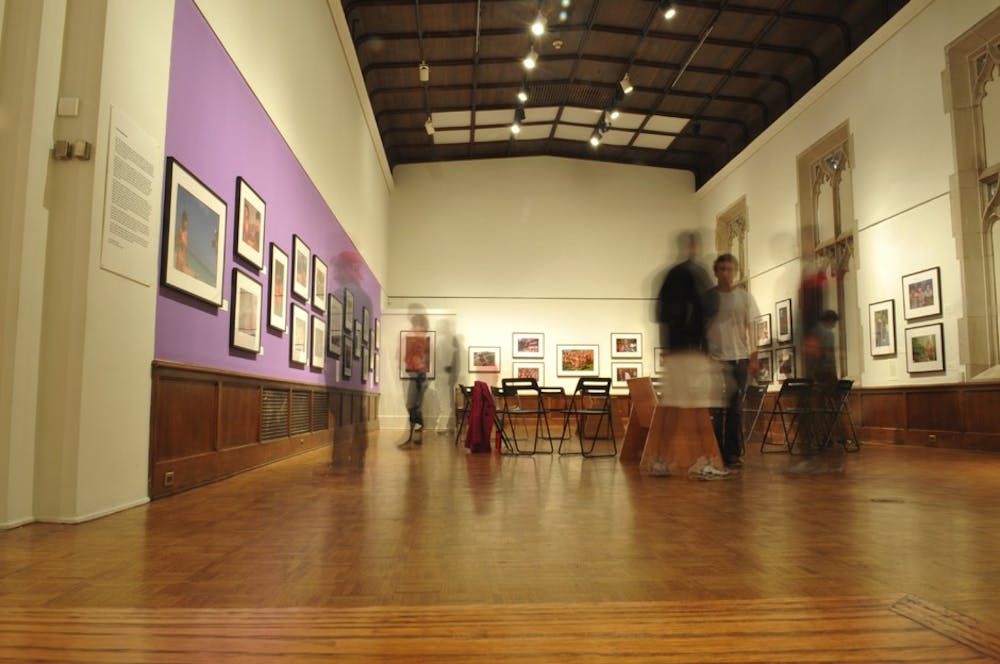
“I would rather be dumb than be a slut, but I would rather be a slut than be fat or ugly.”
That’s the life philosophy of 18-year-old Mary Cady, one of the subjects of the photography exhibit “Girl Culture,” now on display at the Arthur Ross Gallery until July 31.
The exhibit, which showcases 50 photographs and a video “Fashion Show” by Lauren Greenfield, opened April 9. Through the images and stories that accompany some of the photographs, “Girl Culture” depicts “how society really engages women from an early age to be very focused on the body,” Arthur Ross Gallery curator Lynn Marsden-Atlass said.
The subjects of Greenfield’s work range from a 4-year-old girl to women in their 20s and 30s, all of whom have been affected by the pressure to be thin and conform to the standard of beauty depicted by popular media.
The whole transformation from girlhood to womanhood “has changed so radically, especially with the advent of the internet,” Marsden-Atlass said. Though character development used to be the focus of growing up female in America, now, “the body has become the project.”
While Marsden-Atlass said pressure to conform to the “prescribed, model-like, waif-like look” affects all women equally, the “Girl Culture” exhibit doesn’t necessarily convey that reality, said Shannon Lundeen, associate director of the Women’s Studies Program and the Alice Paul Center for Research on Women, Gender and Sexuality — one of the exhibit’s sponsors.
“Girl Culture” depicts a range of lifestyles and situations for women in America, but it is “missing plenty of young girls who are affected” by the image-conscious culture in which they live, Lundeen said. The photographs tend to overrepresent white, heterosexual girls and leave out girls who do not conform to that type, she added.
The exhibit shows how women are “conditioned as objects of consumption for the male gaze.” However, Lundeed added, even women who are not attracted to men “live with the same concerns of body image.”
“Bodies have to fit a certain ideal, or they are marked as not female,” she added.
The pressure for girls to appear feminine extends beyond issues of gender and sexuality.
A significant part of the exhibit concerns the prevalence of weight-loss culture, Marsden-Atlass said, adding that one in every eight American women has struggled with an eating disorder.
“A lot more people are dealing with these problems on an everyday basis than we realize,” College sophomore Maggie Edkins wrote in an email. “I’ve heard people say things like ‘I just need to go anorexic for a week so I can fit my formal dress’ without realizing they’re reinforcing a seriously terrible cultural problem.”
Edkins added that it is especially important to bring exhibits like “Girl Culture” to communities like Penn, where “the pressure to fit a certain mold is intense in a variety of ways.”
At Penn, “there’s an atmosphere of people striving for perfection,” which is also seen in the exhibit, College senior Alyssa Birnbaum said.
Though the issues of body image and weight-loss culture are “almost taboo,” Birnbaum added, “Girl Culture” emphasizes that they must be discussed.
“Body image and sexuality are things people should be talking about,” Edkins wrote, “and you can’t avoid that if you have to literally face it on a gallery wall.”
The Daily Pennsylvanian is an independent, student-run newspaper. Please consider making a donation to support the coverage that shapes the University. Your generosity ensures a future of strong journalism at Penn.
DonatePlease note All comments are eligible for publication in The Daily Pennsylvanian.








